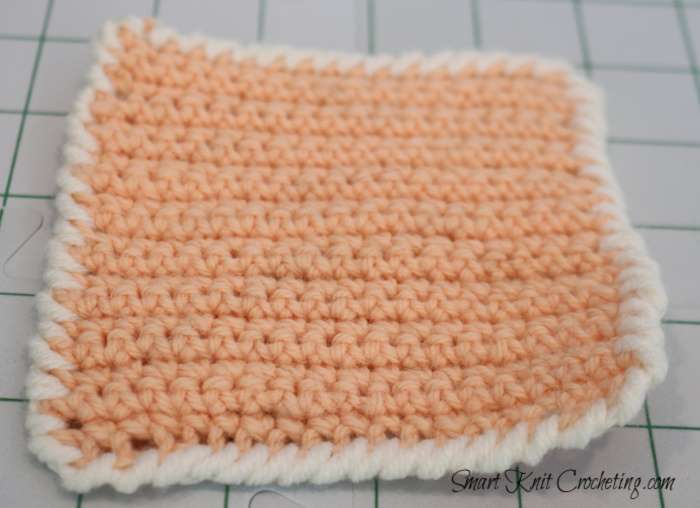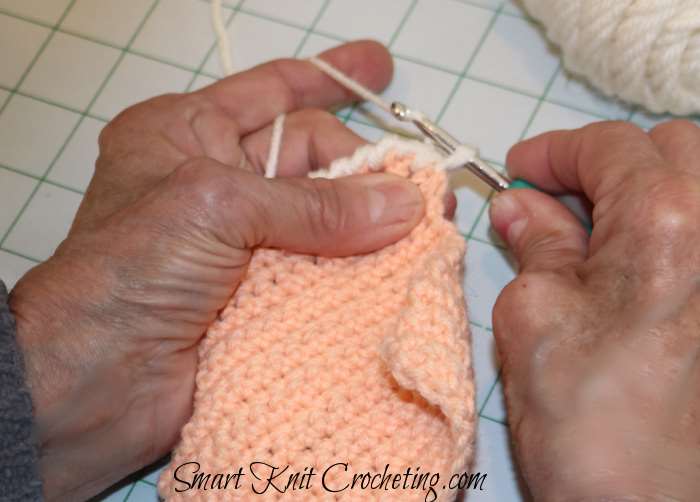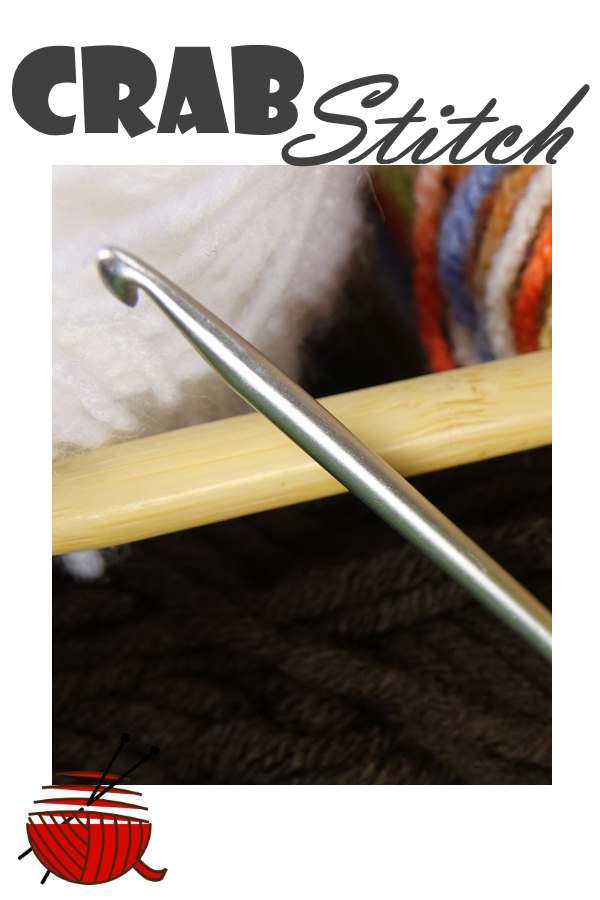- Home
- Crochet Stitches
- Crab Stitch
Crochet Crab Stitch: Uses and How to Instructions
(a.k.a. Reverse Single Crochet, Corded Edge)
Crab Stitch Rewritten by Janice Jones |Last Updated 05/19/2023
The Crab stitch is a simple single crochet stitch, but instead of working the rows right to left it should be worked from left to right.
That's why there is one more name for this stitch - Reverse Single Crochet. It looks pretty decorative and reminds me of a cord. A corded edge or shrimp stitch are other well known names for the stitch.

Uses for the Crab Stitch or Reverse Single Crochet
Here are a few traditional ways to use a Reverse Single Crochet:
- It is a good decorative border for a finished edge. Reverse
single crochet can be done both on a knitted or crocheted fabric.
It firms up the edge preventing it from rolling. At the same
time, decorative cord looks light and neat.
- It is a good solution for rounding off armholes and necklines
where steps of decreases are noticeable.
- In case you would like to insert a zipper, a decorated "frame" of stitches along the edges will make it look neat and finished.
- A reverse single crochet stitch is a good "trick" to adjust a wavy and stretched edges (usually it happens on the bottom of the sleeves, sweater or a dress.)
- Crochet a row of the single crochets to make the edge fits you. Did you not manage to make it proper from the first attempt? Try one more time till you figure out how many single crochets on the edge you need to make it fit. Use that row as a base for a decorative stitch edging.
How to Crochet a Crab Stitch
If you see this stitch in a pattern, it maybe called the Reverse Single Crochet Edging and is abbreviated rev-sc.
The best way to practice this stitch is to first create a swatch of single crochet.
Crab Stitch Tutorial

Materials Needed for the Crab Stitch Border
For the purposes of this tutorial, I am creating a swatch of single crochet stitches.
- Hook: Size 4.5 mm or US 7
- Yarn: Red Heart Super Saver #4 Worsted weight Yarn or yarn of your choice
- Scissors
- Tapestry Needle for weaving in ends
This smaller sized hook has created a square swatch that is stiff yet perfect for a coaster if you want to turn it into a project. Otherwise, you may want to consider trying out this stitch using a larger hook.
Abbreviations Used in this Crab Stitch Tutorial
sc Single Crochet
ch Chain
sl st Slip stitch
Directions for Making the Crab Stitch or Reverse Single Crochet
Ch 21. Turn.
Sc in the second chain from the hook. Sc in each chain until you finish the row.
Turn and Ch 1.
Work sc in each sc crochet to the end of row. Turn and Ch 1. Work enough rows to create a square swatch.
For this project, I created a square that was:
20 rows and 20 stitches = 4.25 inches.
Bind off. You can either weave in your ends or wait until you've added the crab stitch border and then do your weaving.
Crab Stitch Border

The stitch is easy to do, but it certainly requires some practice to make it look clean-cut. Reverse direction of crocheting can confuse you a little bit from the very beginning. Especially if you tend to crochet pretty tight. It does get easier with practice.
You can either choose to make the crab stitch in the same color yarn or find a contrasting color. For the purposes of this project, I chose a contrasting color.
You will be working in the opposite direction that you normally work, so if you are right handed, work from the left to the right. If you are left handed, work towards the left.
Attach a new color if desired and insert your hook from the front to the back. You will still be working the single crochet stitch, just moving in the opposite direction.
You should crochet from the left to the right (right-handed people). Yarn is in the back of the work. Insert the hook from front to back at the end of the row. Chain one for height.
Yarn over. Draw up a loop. There are two loops on the hook.
Yarn over. Pull yarn through both loops as usual for a single crochet.
Continue across the row inserting your hook at right to begin the next crab stitch.
It does feel a little awkward at first but by the time you have created a crab stitch in each sc around the edges, you will feel like a pro. As you get to the end, create a slip stitch and pull through. Cut your yarn and weave in the ends.
Crab Stitch Question and Answers
Questions: Why can't you just go around the edge with a row of single crochet stitches?
Answer: You can certainly do that. There is nothing wrong with that, but the edging will not look the same. The crab stitch provides a more finished look for your edges.
Question: Do I need to add an extra stitch to each corner so that the corners look more mitered?
Answer: You can but for this stitch is not necessary unless you are looking for that mitered edge. If you want to do so, create your corners as if you were making a granny square, for example. One single crochet followed by a chain and then another single crochet in the same space.

Further Reading
One of my favorite crochet handbooks is called Complete Crochet Course: The Ultimate Reference Guide by Shannon and Jason Mullett-Bowlsby. I used this reference in writing this tutorial.










